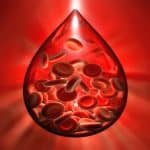Tell us about Liqui-Pellet technology – what is it and how does it work?
Liqui-Pellet could be the next generation of oral dosage for drug delivery, created using an innovative manufacturing process. The way that solid tablets are currently made is by mixing together excipients – carrier material – with an active pharmaceutical ingredient (API). If this API has low water solubility, it will not dissolve effectively in the gastrointestinal fluid, leading to poor drug absorption. As a result, less API enters the circulatory system, and the therapeutic effect is reduced – we would say that it has poor bioavailability.
In Liqui-Tablets, the API is held in a liquid state within tiny pellets that are released more rapidly and consistently as the solid dosage form breaks down. We’ve known for a long time that liquid particles can enter the circulation faster because they don’t need to first dissolve from solid to liquid, but previously it was impossible to deliver a high enough dose of most APIs in an acceptably small liquid-based tablet. Essentially, we’ve found a way of combining the practicality of solid tablets with the bioavailability of liquid particles in a commercially feasible manner.
How did the idea for the technology develop?
Liquisolid technology – the precursor to Liqui-Pellet – has been around for more than two decades, but it has never been taken seriously as a viable method for producing pills, because of some significant drawbacks. As well as the huge quantities of liquid that are often needed to effectively dissolve and suspend the API, mass-manufacture is difficult because the formulation tends to become wet and sticky when combined, meaning that it doesn’t flow easily.
I was developing something in the lab that involved an extremely high proportion of liquid medication, and as a result the admixture of carrier material, coating material and API was non-flowable.
I had been using the pelletisation machine, and had a kind of ‘lightbulb’ moment – what if this wet mass could be made into pellets? And when we tried it, it was highly flowable and yet retained the liquid medication within the pellet structure.
Our process involves extrusion-spheronisation, resulting in tiny, spherical pellets. A relatively small surface area of each sphere is in contact with any of its neighbouring spheres, and combined with the use of nanosized coating material, this offers excellent flow property.
That was the starting point of our research – a paper was recently published in AAPS PharmSciTech that illustrates how Liqui-Pellet is not restricted by the same flow dynamics as the classical liquisolid formulation. Over the last few years we have been further refining our formulation, and there is much unpublished data that charts our progress as we improved drug release performance, carried out quality control tests and demonstrated the potential for upscale manufacturing.
Why the need to increase the bioavailability of medicines?
Bioavailability is an issue that impacts a huge number of treatments. In general, the higher the bioavailability of the drug, the greater the efficacy (or therapeutic effect). By some estimates, as many as 60% of medicines on the market, and around 40% of new drugs in development are poorly water-soluble.
Many otherwise viable new treatments will never reach the market, because there is no practical way to administer them in sufficiently high concentration. And even those that do make it to market despite poor or compromised bioavailability have problems as a result – they could be prescribed too cautiously, meaning that the patient receives a subtherapeutic dose of API, or too liberally, increasing the risk of adverse reactions and side effects. So there is a huge incentive to improve the bioavailability of future drug therapies.
What are some of the biggest challenges of working in this area?
One of the biggest challenges is to make the product work, whilst taking into consideration the commercialisation factors. We have put a lot of time into creating a product that can deliver the desired performance in terms of bioavailability, and also be practical in terms of manufacturing, upscaling, quality control tests and cost. We’ve made significant progress on all fronts, and a lot of our unpublished experimental data has addressed each of these challenges.
We believe we have now resolved most of the issues that have historically prevented any liquisolid dosage forms from reaching the market, but our technology is still in its infancy, and so more work is required to explore its potential.
What kind of opportunities could this technology create for industry?
One of the Healthcare Technologies Grand Challenges issued by the Engineering and Physical Sciences Research Council (EPSRC) is about ‘Developing Future Therapies’. The Council is supporting research that enhances the efficacy and precision of therapies, lowers the cost of manufacturing and reduces the risk to patients of side effects. Liqui-Pellet technology can have an impact in each of those areas, with all the potential opportunities that implies.
The most attractive feature of Liqui-Pellet is its versatility. Our process can be applied to a wide range of new and existing formulations very easily, making it a highly commercially feasible alternative for any treatments that are hampered by poor water-solubility.
Aside from the potential to bring many more viable treatments to market simply and cost-effectively, there are several other opportunities. Because the API can be released in a more predictable manner, we’ll have much better control over adverse events, meaning that certain treatments can be prescribed with more confidence.
Take anticoagulants like warfarin – doctors are usually cautious when prescribing these because if the API is released unpredictably, it can cause patients to bleed unpredictably. And there is also the possibility of developing new oral dosage forms for treatments that currently must be delivered intravenously.
Liqui-Pellet holds plenty of potential for these kinds of advances, but it’s also important that it doesn’t use complex equipment, and is a very low cost process. That means that the benefits could extend to less economically developed countries, which I personally would like to see.
Have you had any interest from or are you working with any pharma companies?
This is really the first time that we’re going public with the technology! There have been numerous research papers that we’ve held off on publishing whilst making sure that we could protect the intellectual property. It was a long process, so we’re now in the unusual position of telling the world about a whole series of breakthroughs that were involved in the research, over the coming months. That’s a long way of saying that we’ve not been working with any pharma companies yet, but now that Liqui-Pellet is out in the world we expect that there will be a lot of interest.
How would you like to further develop the technology/business in the future?
There are so many ways that the technology could develop from here. We’re working with the team at the Sussex Innovation Centre to help us reach out and start conversations with the pharma industry, and that’s got to be the next step – we want to hear from interested parties, find out more about the clinical areas where this innovation might be most valuable, and to understand where potential licensing or development partners are interested in us taking it.





